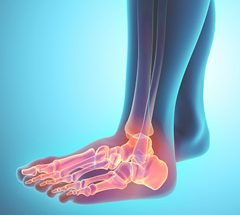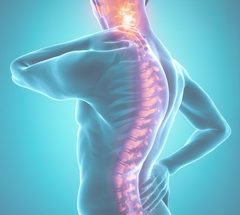Percutaneous Spinal Instrumentation
Learn what is involved with a minimally invasive percutaneous spinal instrumentation procedure on your lower back.
Percutaneous spinal instrumentation are devices that can be placed in the spine through a small incision to treat spinal stenosis. Examples of such devices are the X-Stop and Superion.
What is spinal stenosis?
The spinal column consists of vertebrae separated by discs. Each vertebra consists of a main body (vertebral body) in the front and a bony canal (spinal canal) in the back. Between each of the bodies is a disc. The “spinal canal” in the back contains the spinal cord and nerves. The nerves exit the spinal canal through a small window called the foramina.
Spinal stenosis is narrowing of the spinal canal or foramina. Over time, the spinal canal and/or foramina can become stenotic (narrowed) when the ligaments between the laminae thicken and the facet joints become arthritic and overgrown. Disc bulges can also contribute to this narrowing. Often discrete bone spurs will form pinching nerves.
What is the cause of spinal stenosis?
It is unclear why some people develop spinal stenosis and others do not. As previously mentioned, soft tissue and bony structures can narrow the areas where the neural elements live in the spinal canal. When the narrowing occurs in the spinal canal, we call this “central stenosis.” When narrowing occurs in the foramina, we call this foraminal stenosis. Spinal stenosis is a common problem in people over 50 years old. It most commonly occurs in the mid to lower lumbar spine and women are typically affected more often than men.
The pressure on these nerves can increase when you stand or walk, thereby causing an increase in your back pain and/or leg pain. The leg symptoms are quite varied, ranging from mild aching to severe fatigue. Leg pain, buttock pain, pins-and-needles sensations, and numbness are also common symptoms in patients with spinal stenosis. Your ability to walk may also be limited to a few blocks.
How does a minimally invasive percutaneous spinal instrument help treat spinal stenosis?
These devices are placed between the spinous processes of two vertebrae. The spinous processes are the bones you feel when you press firmly on the midline of your back. Once securely placed, the devices are then expanded. This increases the space between the spinous processes as well as the foramina and spinal canal. By removing the pressure from the nerves they can significantly improve mainly buttock and leg pain.
What is involved with the surgery?
A one-inch incision is made in the midline of your back at the operative level where there is “spinal stenosis.” Careful dissection is performed to create space between the spinous processes. The device is then carefully inserted between the spinous processes. Intra-operative X-rays confirm appropriate placement. Once the device is in the correct position, it is expanded. This opens up the spinal canal and foramen. The surgery takes approximately an hour per level. Most patients are able to go home the same day as surgery.
What symptoms are relieved with a percutaneous spinal device?
Symptoms in the buttocks and legs are most reliably relieved with surgery. These symptoms include pain, numbness, tingling, aching, heaviness, weakness and inability to walk.
What is the overall success rate?
Short-term success rate for this procedure is around 80% to 90%. Long-term success of the procedure often depends on your specific pathology. One of the first things you should notice a few weeks after the procedure is an improvement in your leg pain and your ability to walk. If you had leg weakness before the surgery, you will be enrolled in a physical therapy program to help strengthen your legs after your procedure. Resolution of numbness, however, tends to be somewhat unpredictable.
What can I do when I go home?
You can be as active as your pain allows. You can ride in a car, climb stairs, and generally perform your normal activities for the first month after surgery. At the one-month mark, you may be enrolled in a structured physical therapy program to include core strengthening and neutral spine exercises. You will also be allowed to begin low impact aerobic activities (e.g., elliptical training, recumbent bicycling, swimming, etc.) at this time point. Three months after surgery, you can begin higher impact aerobic activities such as running, jumping, and non-contact sports. Six months after surgery, you will be free to participate in any physical activity (including contact sports and activities) without restriction.
Should I have the percutaneous spinal instrumentation surgery?
If the symptoms in your legs are simply annoying and mild you probably should not undergo the operation. However, if your quality of life is significantly affected by the symptoms associated with spinal stenosis, this procedure can often be life changing. Since the procedure is considered elective in the majority of cases, however, it is your responsibility to determine if your symptoms warrant the risk of surgery.
Some patients may be better treated with a laminotomy and decompression instead of placement of a percutaneous device. Please consult one of our doctors to learn more and determine which procedure may be best for you.

















